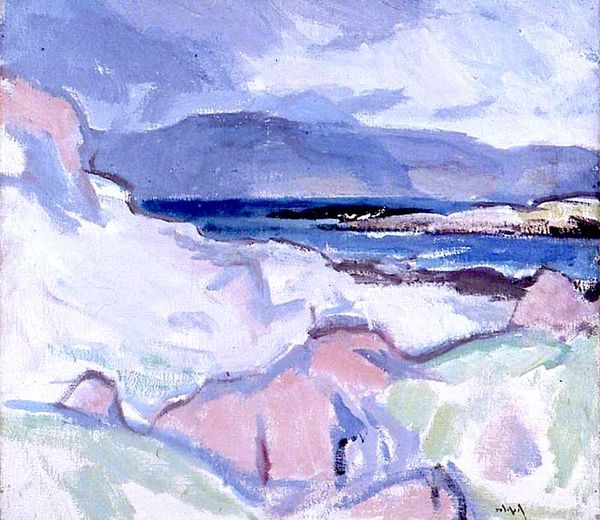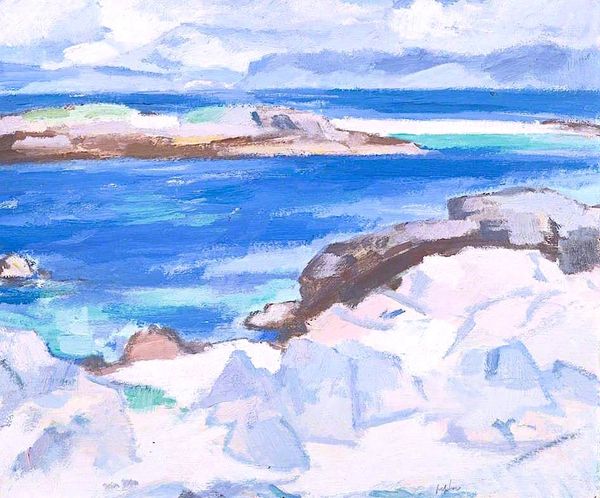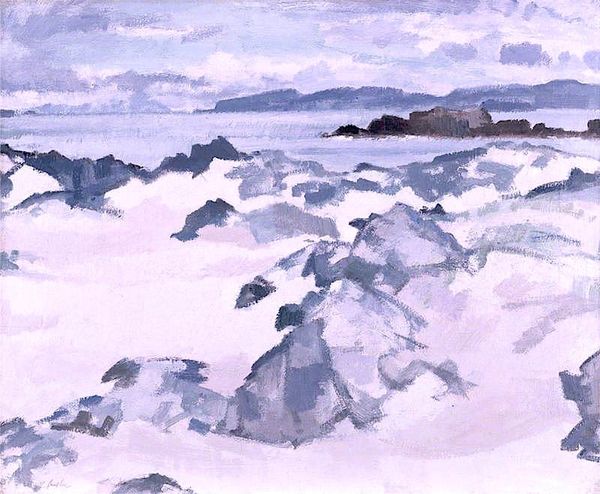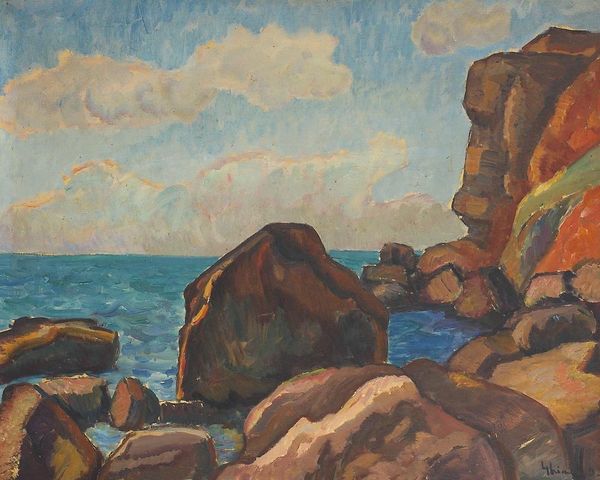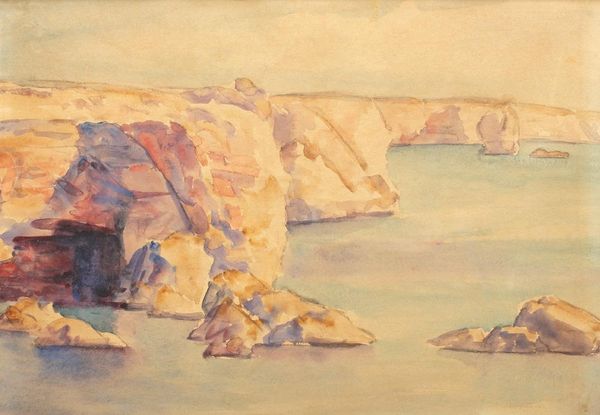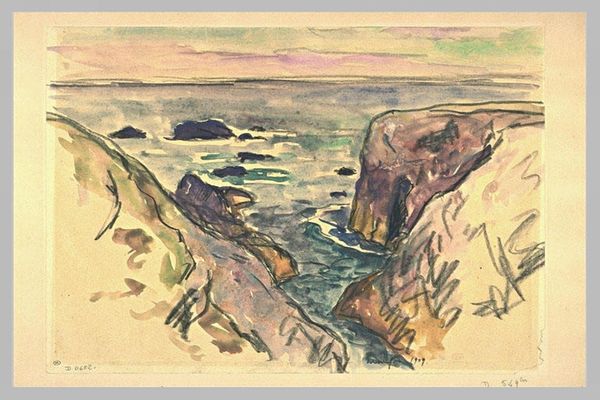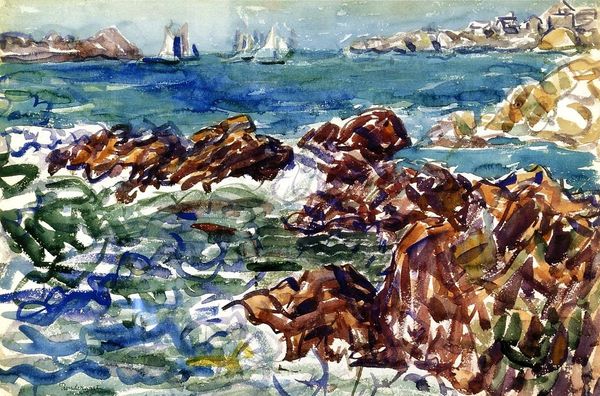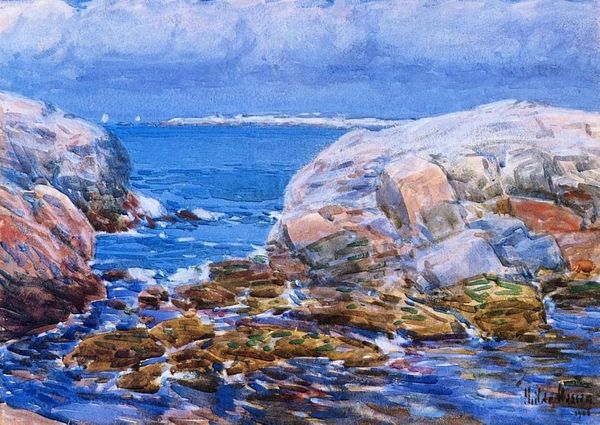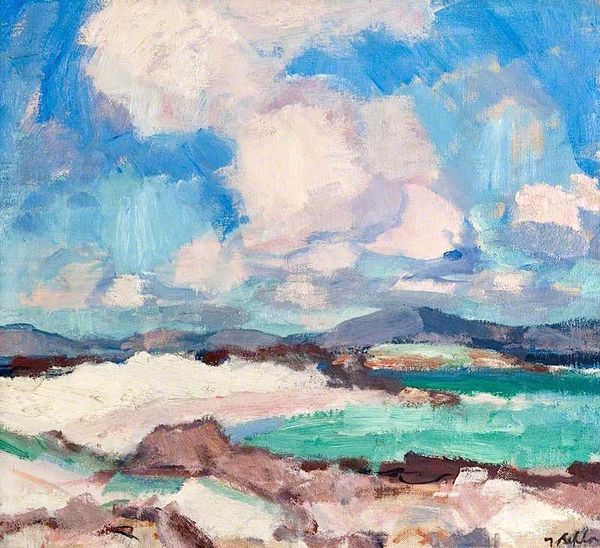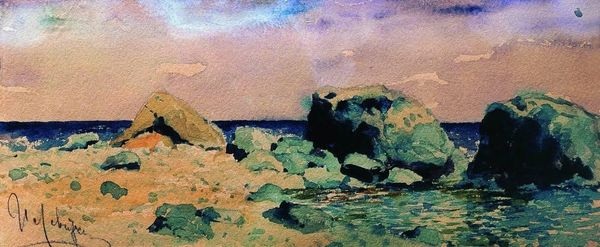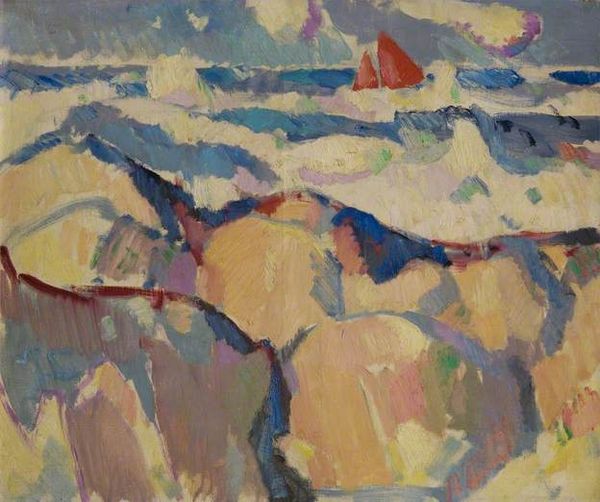
painting, oil-paint, impasto
#
fauvism
#
fauvism
#
painting
#
oil-paint
#
landscape
#
impressionist landscape
#
impasto
#
expressionism
#
post-impressionism
#
expressionist
Copyright: Public domain
Editor: Samuel Peploe’s oil painting, “The Cathedral Rocks”, feels almost aggressively vibrant. The blues are so saturated, and the brushstrokes seem deliberate, almost defiant. What's your take? Curator: I see a rebellion against the established academic traditions of landscape painting. Consider the Fauvist movement brewing during this period, its radical use of color. What could these intense blues signify beyond just depicting the sea? Perhaps a challenge to societal norms, a yearning for freedom, or even a commentary on the human relationship with an untamed natural world? Editor: So you're suggesting the painting could be interpreted as more than just a pretty picture of rocks and water? Curator: Precisely. Let’s consider who had access to coastal landscapes like this during the period Peploe was painting. What did leisure and landscape represent in the societal hierarchy of that time? The very act of painting this scene could be seen as a statement about access, privilege, and the democratization of art. How might its meaning shift for a working-class audience encountering it then, versus our modern gaze? Editor: That adds a completely new layer! I was so focused on the surface of the painting that I hadn’t considered the social implications. Curator: Exactly! Art rarely exists in a vacuum. By examining the historical, social, and political context, we unlock deeper understandings, allowing these 'pretty pictures' to speak to urgent conversations. Editor: Thanks. I'll never look at a landscape painting the same way again.
Comments
No comments
Be the first to comment and join the conversation on the ultimate creative platform.

